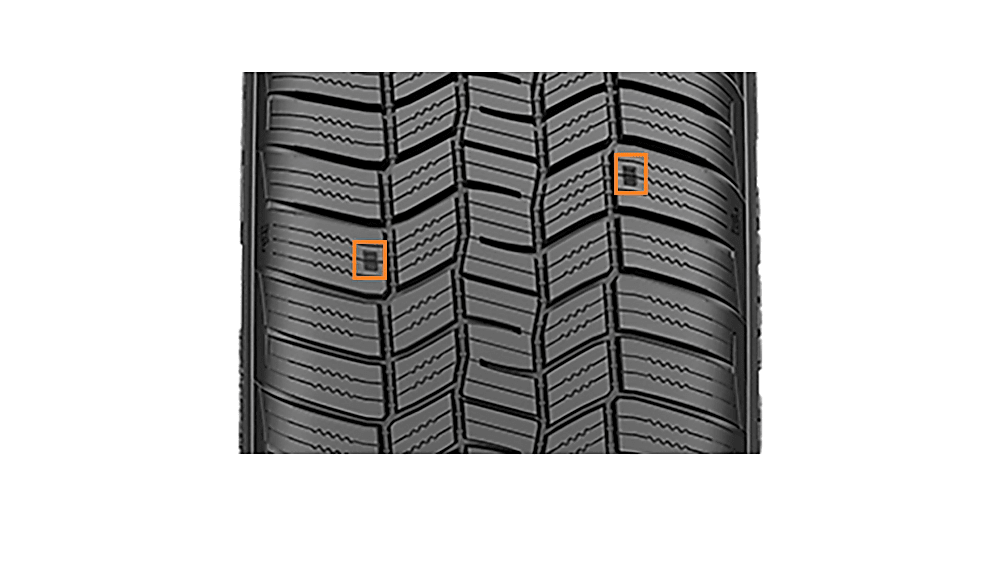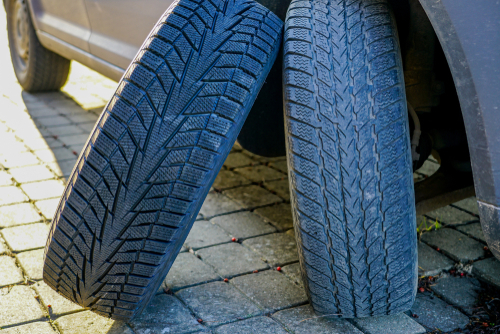
Tires are a critical component of your vehicle, ensuring safety, performance, and a comfortable ride. However, they don't last forever and need to be replaced when the tread wears down.
One way to determine if your tires are nearing the end of their life is by checking the tire wear bars. These small, raised indicators are built into the tire tread to help you assess when it's time for a new set.
In this article, we'll dive into what tire wear bars are, how they work, and why they're an important tool for maintaining your vehicle's safety and performance.
What Are Tire Wear Bars?
Tire wear bars—also known as tread wear indicators or tire wear indicators—are small, raised bars found within the grooves between your tire's tread blocks. These bars are strategically placed around the tire to help you gauge how evenly your tread is wearing down.
The primary purpose of wear bars is to provide a visual indication of the remaining tread depth on your tires. As the tread wears, the height difference between the wear bars and the tread ribs decreases, signaling that it's time to consider replacing your tires.
Tire manufacturers typically place wear bars at a depth of 2/32 inches, which is the legal minimum tread depth in most states. When the tread ribs are level with the wear bars, your tires have reached this minimum threshold and should be replaced for optimal safety and performance.
How Do Tire Wear Bars Work?
Tire wear bars act as a practical tool for assessing tread wear progress. As the tire tread gradually diminishes with use, the ribs inch closer to the wear bars. When the tread aligns with these bars, it indicates that the tire's tread depth has reached a critical point. At this stage, replacing your tire becomes essential to ensure your vehicle's optimal grip and handling.
The precise location of these wear bars is integral to their function. Positioned throughout the tire's circumference, they provide a clear and consistent measure of tread wear. This design allows drivers to easily identify when the tire is uniformly worn across its surface. Regular inspection of these indicators is vital, as insufficient tread can significantly impair traction, particularly on wet or slippery roads.
Recognizing the role of wear bars offers several advantages. They simplify the process of determining tire health without specialized tools and alert you to possible issues like uneven wear. By routinely checking these indicators, you ensure that your tires remain in top condition, contributing to a safer driving experience.
Why Tire Tread Depth Matters

Tire tread depth plays a vital role in maintaining your vehicle's grip on the road. The design of the tread allows it to channel water away from the tire, which is especially crucial in wet conditions. This design helps prevent the tires from losing contact with the road, thereby reducing the risk of skidding or sliding. When the tread is inadequate, the ability to manage water effectively diminishes, leading to a potential loss of control.
Beyond just traction, tread depth significantly impacts braking performance and steering accuracy. A tire with sufficient tread can handle various driving conditions, providing a stable and comfortable ride. As the tread wears, the tire’s ability to cushion impacts and maintain control decreases. This makes regular checks of your tire's tread an essential part of car maintenance, ensuring consistent performance and safety on the road.
Minimum Legal Tread Depth
The law requires tires to maintain a certain tread depth to be deemed roadworthy. In many places, this depth is set at 2/32 inches. Tires worn beyond this point are considered unsafe and may incur penalties from traffic authorities. To avoid these risks and ensure compliance, it's crucial to inspect your tires and replace them before they reach this critical point. Regular monitoring can help you maintain the necessary tread depth to keep your vehicle safe and legally compliant.
How to Check Your Tire Tread Depth
Regularly checking your tire tread depth ensures you maintain safe driving conditions. One simple method involves using common coins to gauge tread wear. The penny test is a quick and easy way to assess whether your tires have sufficient tread depth. By placing a penny upside down into the tread groove with Lincoln's head facing you, you can quickly determine if your tread is worn. If Lincoln's hair is fully visible, your tread is too shallow, signaling the need for a new set of tires. For an even more cautious approach, use a quarter. Insert it headfirst into the groove, and if the tread reaches only part of Washington's head, it's wise to consider replacing your tires before they wear further.
A more precise method involves using a tire tread depth gauge. This tool measures the exact depth of your tread in 32nds of an inch, providing an accurate reading of your tire's condition. Simply insert the probe of the gauge into the tread groove and press it down until the base is flush with the tire. The gauge will then display the depth, allowing you to assess if your tires have reached a critical point of wear. Regular use of a tread depth gauge helps monitor tread wear over time, ensuring you replace your tires before they become a safety hazard.
Tire wear indicator bars also serve as a built-in tool to evaluate tread depth. These raised sections, found in the grooves between the main tread ribs, provide a clear visual reference for tread wear. As the tread wears down to the level of these indicators, it's a sign that replacement is necessary to maintain safety and performance. This visual cue acts as a straightforward reminder to replace your tires promptly, ensuring they continue to perform effectively on the road.
Spotting Irregular Tire Wear
Detecting uneven tire wear is essential for both vehicle safety and tire longevity. Irregular patterns in tread wear can often reveal underlying mechanical issues that might otherwise go unnoticed. Regularly examining your tires for these patterns is a proactive step in maintaining your vehicle's performance.
Overinflation is a frequent culprit behind uneven wear, causing the tread to wear down more quickly along the centerline. This is because excessive air pressure forces the tire to bulge, reducing contact with the road to just the center portion. In contrast, underinflation results in the outer edges, or shoulders, wearing out faster. This happens because an insufficient amount of air causes the tire to sag, increasing the contact area on the shoulders and leading to accelerated wear.
Alignment and suspension issues also manifest as irregular tire wear. If a tire shows more wear on one side than the other, it could indicate that the vehicle's alignment is off, leading to uneven pressure distribution across the tire. Poor suspension components, such as worn shocks or struts, can contribute to this uneven wear by failing to maintain consistent contact with the road. By routinely checking for these wear patterns and addressing any irregularities, you ensure your vehicle remains safe and efficient on the road.
When to Replace Your Tires

Timing your tire replacement correctly ensures both safety and optimal driving performance. Even though wear indicators provide a visual cue, it's wise to anticipate replacement before reaching the critical tread depth. Many experts advocate for swapping out tires when they still have some tread left, to maintain effectiveness in diverse conditions.
Changing tires once the tread reaches 4/32" can prevent issues during challenging weather, such as rain or snow. At this stage, tires still offer adequate traction, lowering the risk of slipping and ensuring better vehicle handling. Utilizing various methods like a tread depth gauge or the penny test helps you track tread levels and prepare for timely replacements.
Avoid waiting until tires are overly worn, as this can compromise road safety. Observing tire condition and responding when indicators suggest wear is nearing its limit is crucial. This proactive approach not only safeguards against unexpected problems but also preserves the overall performance and reliability of your vehicle.
Monitoring your tire wear bars is a simple yet effective way to ensure your vehicle remains safe and performs at its best. When it's time for new tires, shop for tires online and find the best deals. We're here to help you find the perfect set of tires for your vehicle, so you can drive with confidence knowing you're getting the best value and service.


